The Javan Leopard is a magnificent and critically endangered big cat species found exclusively in Java, Indonesia’s lush islands. These beautiful creatures hold a significant place in Indonesia’s rich biodiversity. Despite their captivating presence, they face numerous threats that have pushed them to extinction.
The Javan Leopard’s history and existence can be traced back thousands of years. Their ancestors, known as Panthera pardus, roamed the dense forests of Java, adapting to the island’s unique environment over time. However, their population drastically declined due to deforestation, illegal hunting, and habitat loss, leading to their critically endangered status today.
In terms of size, Javan Leopards are slightly smaller compared to their relatives from other regions. They generally measure around two to two and a half meters in length from head to tail and stand at a shoulder height of approximately one meter. Despite their relatively smaller size, these agile predators possess tremendous strength and speed, essential for hunting their prey.
Javan Leopards prefer to inhabit various habitats, such as tropical rainforests, montane forests, and even plantations. However, their habitat has significantly reduced due to rapid urbanization and forest destruction. This, in turn, negatively impacts their survival and reproductive capabilities, further endangering their population.
The Javan Leopard’s history, facts, size, habitat, and classification provide an intriguing glimpse into the lives of these majestic creatures. By learning about their unique characteristics and understanding the threats they face, we can strive towards their conservation and preserving their natural habitat. Together, we can work towards ensuring a brighter future for the Javan Leopard and other endangered animals worldwide.
History of Javan Leopard
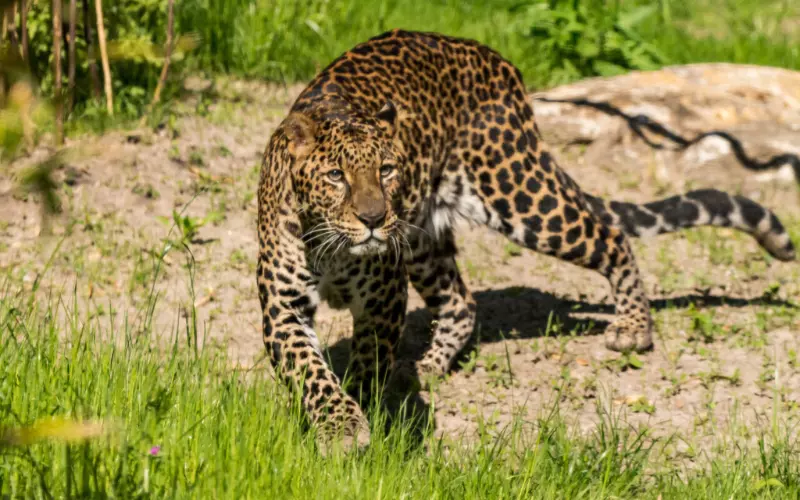
The Javan leopard, or Panthera pardus melas, is a remarkable animal with a rich history. It hails from the island of Java in Indonesia, where it has been a part of the ecosystem for hundreds of years. The Javan leopard is an endangered species due to habitat loss and poaching. Efforts are being made to protect and conserve this beautiful creature.
Many years ago, Javan leopards were abundant and could be found in various habitats across Java. They were excellent hunters known to roam the forests and grasslands for prey. However, as human populations grew, their natural habitats began to shrink. People cleared forests for agriculture and settlements, leaving the leopards with less space to live and hunt. This habitat loss has led to a significant decline in the Javan leopard population.
Unfortunately, poaching has also played a role in the decline of the Javan leopard. Their beautiful fur and body parts are highly valued on the illegal wildlife trade market. Despite hunting being illegal, some individuals continue to hunt and kill Javan leopards for profit. This has further contributed to the decrease in their numbers.
Conservation efforts are now in place to protect the Javan leopard and its habitat. National parks and reserves have been established to provide a haven for these animals. Awareness campaigns are also being conducted to educate people about conserving the Javan leopard and their natural resources. By involving local communities and working together, there is hope that the Javan leopard can be saved from extinction and continue to be a part of Java’s rich biodiversity.
Importance of Javan Leopard
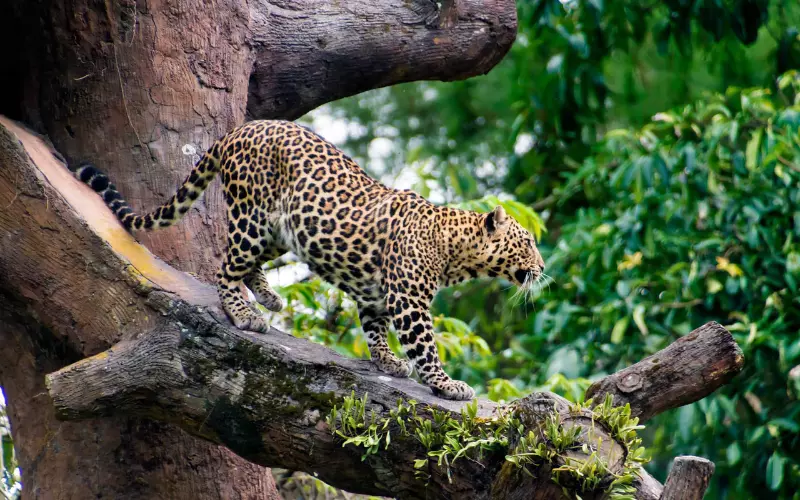
The Javan leopard is an essential animal due to its significant role in maintaining the balance of the ecosystem. Firstly, it is a top predator, which means it hunts and controls the population of other animals. Doing so helps regulate the number of prey species, preventing overpopulation. This is crucial because an overabundance of certain animals can disrupt the delicate balance of the food chain and lead to ecological imbalances.
Secondly, the Javan leopard is an indicator species. This means that the presence or absence of this animal can indicate the health and condition of its habitat. A decline in the Javan leopard population may indicate habitat loss, poaching, or lack of prey availability. By monitoring the Javan leopard population, scientists and conservationists can identify and address these problems, ensuring the preservation and protection of the surrounding ecosystem.
Lastly, the Javan leopard plays a critical role in promoting biodiversity. Biodiversity refers to the variety of living organisms in a specific area. The presence of the Javan leopard indicates a healthy ecosystem with diverse animal species. Conservation efforts for the Javan leopard ultimately benefit other animals and plants in their habitat, contributing to the overall richness and resilience of the environment.
The Javan leopard is essential as a top predator, an indicator species, and a promoter of biodiversity. Its conservation is crucial to maintaining a healthy ecosystem and preserving the delicate balance of nature.
Amazing Facts About Javan Leopard

1. The Javan leopard is a large wild cat native to the island of Java in Indonesia.
2. It is a critically endangered species, with only around 250 to 350 individuals estimated to exist in the wild.
3. Javan leopards are known for their beautiful coats, which feature a base colour of golden yellow with rosette-shaped black spots.
4. They have muscular bodies and long tails, which help them balance while climbing trees.
5. These leopards are primarily nocturnal, meaning they are most active during the night.
6. They have keen senses, including excellent eyesight and hearing, which help them hunt prey.
7. Javan leopards are carnivores, which means they eat meat. Their diet mainly consists of small to medium-sized mammals like deer, wild boar, and monkeys.
8. Unlike other big cats, Javan leopards are solitary animals and tend to avoid interactions with one another.
9. Female leopards usually give birth to one or two cubs after a gestation period of around 90 to 105 days.
10. The cubs stay with their mother until they are around one and a half to two years old before becoming independent.
11. Habitat loss due to deforestation and human activities, such as illegal hunting and poaching, are the main threats to Javan leopards.
12. Conservation efforts are being made to protect these endangered leopards, including establishing protected areas and raising public awareness about their importance.
13. Javan leopards play a crucial role in maintaining the ecological balance of their habitat by controlling prey populations.
14. They have adapted to living in different habitats, including forests, grasslands, and volcanic regions.
15. Javan leopards symbolise Java’s biodiversity and are of great cultural and ecological significance.
Can we keep Javan Leopard as our Pet?

The Javan Leopard is a beautiful and majestic animal native to the island of Java, Indonesia. However, it is not suitable to keep them as pets. This is because the Javan Leopard is endangered and faces extinction threats.
Unfortunately, due to habitat loss, poaching, and illegal hunting, the population of Javan Leopards has dramatically decreased over the years. Their natural habitat is being destroyed by deforestation for agriculture and urban development. Additionally, they are hunted for their skin and body parts, which are highly prized in the illegal wildlife trade. These factors have pushed the Javan Leopard to the brink of extinction.
It is crucial to understand that keeping an endangered animal as a pet is wrong and harmful to their survival. The Javan Leopard needs to live in its natural habitat to thrive and contribute to the ecosystem. Captivity can lead to physical and psychological distress for these animals. They require a large territory to roam, hunt, and reproduce.
The Javan Leopard should not be kept as a pet. It is a beautiful creature that must be protected from extinction. We must focus our efforts on conservation and awareness to ensure that the Javan Leopard and other endangered species have a chance to survive in their natural habitats. Let us appreciate them from a distance and support efforts to save these incredible animals for future generations.
Size of Javan Leopard
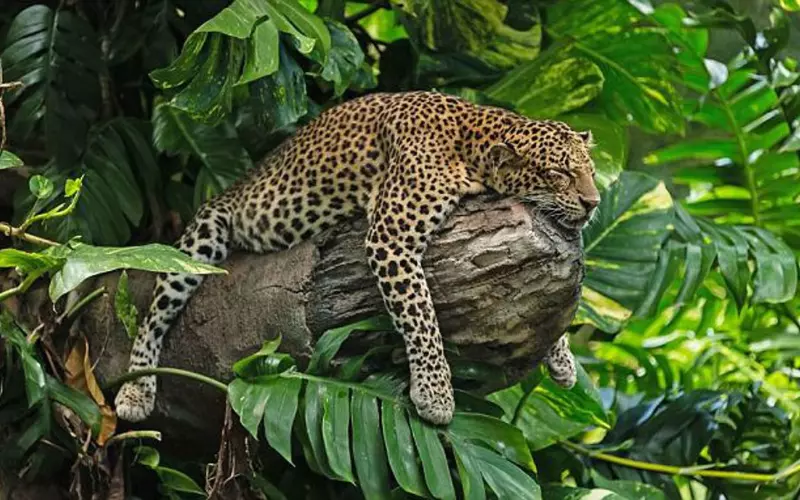
The Javan leopard is a magnificent animal that roams the Indonesian Java island jungles. It is one of the rarest and most elusive big cats worldwide. The size of a Javan leopard can vary, but on average, adult males weigh around 80-150 pounds (36-68 kilograms), while females are slightly smaller, weighing between 60-105 pounds (27-48 kilograms).
In terms of length, Javan leopards measure around 6-7 feet (1.8-2.1 meters) from head to tail, with the tail itself accounting for about 2-3 feet (0.6-0.9 meters) of this length. They have a muscular build and are well-adapted to their forest habitat. Their beautiful coats feature rosette-shaped spots that help them blend into their surroundings, making them excellent hunters.
Despite their relatively small size compared to other big cats, Javan leopards are formidable predators. They have powerful jaw muscles and sharp, retractable claws that enable them to capture and kill their prey efficiently. Their diet mainly consists of deer, wild boar, and other small to medium-sized mammals found in the forests where they reside.
Unfortunately, the Javan leopard is critically endangered due to habitat loss and illegal hunting. It is only estimated that there are fewer than 250 individuals left in the wild. Efforts are being made to protect these majestic creatures and their habitat, but urgent action is needed to ensure their survival for future generations to admire and appreciate.
Habitat of Javan Leopard

The Javan leopard is a rare and endangered species found on the Indonesian island of Java. It has a unique habitat consisting of lowland rainforests, mountains, and even agricultural areas. This magnificent animal is known for its ability to adapt to various environments, making it a versatile survivor.
The lowland rainforests on Java provide the Javan leopard with a dense and lush habitat. Here, the leopard can hide in the thick vegetation and move stealthily through the forest floor, using its spots as camouflage. These rainforests are rich in trees and plants, providing the leopard with abundant prey like deer, wild pigs, and monkeys.
In addition to rainforests, the Javan leopard can also be found in mountainous areas. These regions typically have cooler temperatures and different plant species. The leopard’s robust and muscular body can climb trees and hunt in steep terrains. Its powerful jaws and sharp claws can catch its prey by pouncing from above.
Interestingly, the Javan leopard has also been seen in agricultural areas, which are human-made habitats. Due to deforestation and the loss of its natural habitat, the leopard has been forced to adapt to new environments. It may venture into farmlands and plantations in search of food, leading to conflicts in human-wildlife.
The Javan leopard is an adaptable and resilient animal that can survive in various habitats. However, its survival is threatened by deforestation, illegal hunting, and habitat loss. Efforts are being made to protect and conserve this beautiful creature and its unique habitat so that future generations can continue to marvel at its beauty and strength.
Evolution of Javan Leopard
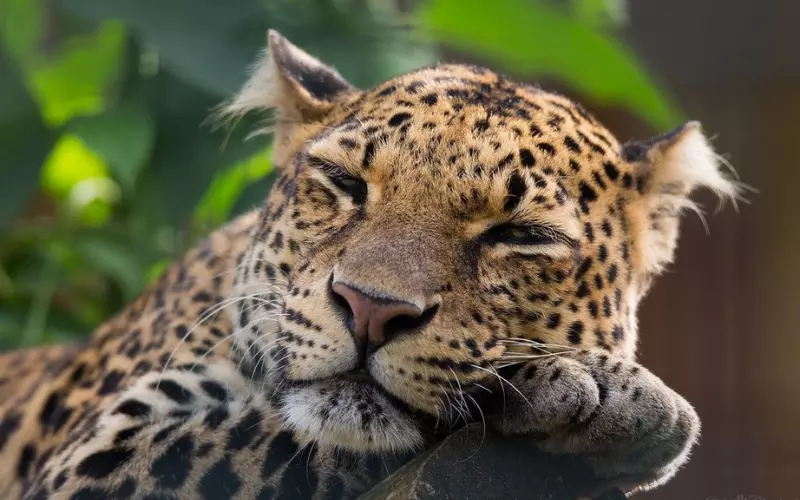
The Javan leopard is a beautiful and fascinating animal that has evolved over many years. Its evolution tells a story of survival and adaptation to its environment.
In the beginning, the ancestors of the Javan leopard were small cats that lived in forests. These cats had to develop certain survival skills, such as climbing trees and hunting for food. Over time, they grew bigger and stronger, allowing them to become better hunters and protect themselves from predators. This change in size was a crucial step in the evolution of the Javan leopard.
As the years went by, the forests where the Javan leopard lived started to change, too. The arrival of humans resulted in deforestation and loss of habitat for these leopards. This forced them to adapt once again. Some leopards learned to live in smaller patches of forest, while others ventured into human settlements in search of food. This adaptation helped them to survive in their changing environment.
Today, the Javan leopard faces new challenges due to human activities, such as poaching and illegal logging. As a result, their population has been dramatically reduced, making them critically endangered. Efforts are being made to protect their habitat and raise awareness about their conservation. Hopefully, these efforts will help the Javan leopard continue its fantastic evolution and thrive.
Classification of Javan Leopard

The Javan leopard is a fascinating animal and belongs to the classification of mammals. Mammals are a group of animals with specific characteristics, such as having hair or fur on their bodies and nourishing their babies with milk. The Javan leopard is a Panthera genus member, including other big cats like lions, tigers, and leopards.
Within the Panthera genus, the Javan leopard belongs to the Panthera pardus species. Species is a more specific group within a genus and refer to animals with similar physical and genetic traits. The Javan leopard is a distinct species because its unique characteristics set it apart from other leopards in different parts of the world.
The Javan leopard is also classified under the family Felidae, which includes all the species of cats. The Felidae family is known for its members’ sharp claws and teeth, which they use for hunting their prey. These powerful predators are found in various habitats, including forests, grasslands, and mountains. However, the Javan leopard is critically endangered and is primarily found in only one place, the Indonesian island of Java.
The Javan leopard is a member of the mammal classification as a species within the Panthera genus and Felidae family. Its unique characteristics make it distinct from other leopards, and it is native to the island of Java. The Javan leopard’s status as critically endangered highlights the importance of conservation efforts to protect this magnificent animal and its habitat.
Types of Javan Leopard
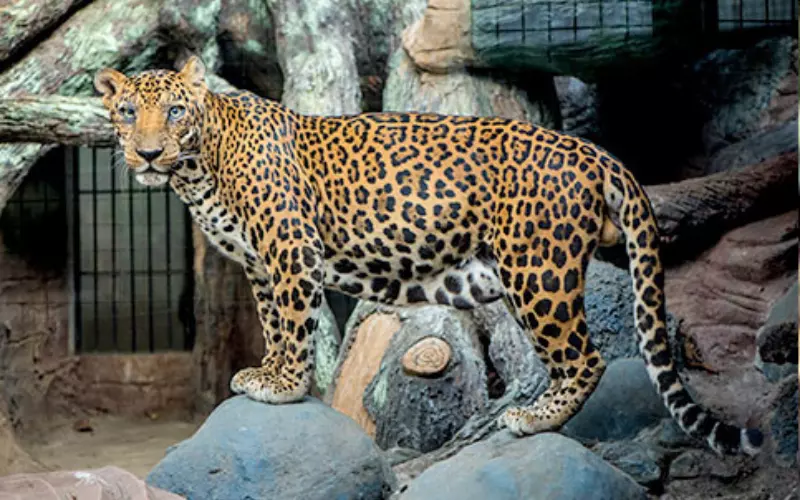
1. Javan Leopards are a type of wild cat species found only on the island of Java in Indonesia. They are popular due to their unique characteristics and vulnerabilities. The Javan Leopard is known for its beautiful coat, covered in rosettes (spots) that help it blend into its forest habitat. They have a sturdy build and are mighty, agile hunters that can climb trees and swim in rivers to catch their prey. Javan Leopards are highly elusive and mainly active at night, making them challenging to spot in the wild. Sadly, they are critically endangered, with only around 250 individuals remaining due to habitat loss and poaching for their fur and body parts. Due to their endangered status, conservation efforts are being made to protect their remaining habitats and increase their population.
2. The Javan Leopard is known to be a solitary animal, living and hunting alone. This behaviour gives them a more extensive territory to find food and escape potential competition. They mark their territories by scratching trees and leaving their scent on the ground to communicate with other leopards. Males and females only come together during mating season, after which they part ways.
3. As apex predators, Javan Leopards play a crucial role in maintaining the balance of the ecosystem. By controlling populations of prey animals, they prevent overgrazing and help maintain healthy forests. Their presence also indirectly benefits other species lower in the food chain by reducing resource competition.
4. Javan Leopards have a diverse diet, which includes deer, wild boar, monkeys, and reptiles. Their sharp, retractable claws and strong jaws enable them to catch and kill their prey effectively. They are ambush predators, patiently stalking their target until they can pounce and deliver a swift, lethal bite.
5. Hunting and habitat destruction are the primary threats to Javan Leopard populations. Deforestation, due to agriculture and palm oil plantations, reduces their natural habitat, leaving them vulnerable to human-wildlife conflict and loss of prey. Poaching for their striking fur and illegal wildlife trade also threatens their survival.
6. Efforts to protect the Javan Leopard include establishing protected areas and increasing public awareness. National parks and conservation projects aim to safeguard their habitats and ensure their population’s long-term survival. Education and advocacy campaigns inform local communities about the importance of preserving wildlife and the consequences of poaching.
7. The Javan Leopard is scientifically classified as Panthera pardus melas. Their scientific name helps identify them as a subspecies of leopard and distinguishes them from other leopard subspecies found in different regions.
8. An exciting fact about Javan Leopards is that they are excellent climbers. Their solid muscles and retractable claws allow them to scale trees effortlessly, providing them with alternative shelter and vantage points for hunting.
9. Javan Leopards have faced numerous challenges throughout history, leading to their critically endangered status. Historical factors such as colonial hunting and the introduction of domestic animals have contributed to their population decline. Conserving and protecting this unique animal species requires international collaboration and strict enforcement of anti-poaching laws.
10. The Javan Leopard’s survival depends on continuous conservation efforts and preserving its natural habitat. By ensuring sustainable land use practices and raising awareness about the importance of protecting biodiversity, we can strive to secure a future for this magnificent wild cat.
Geographical Presence of Javan Leopard
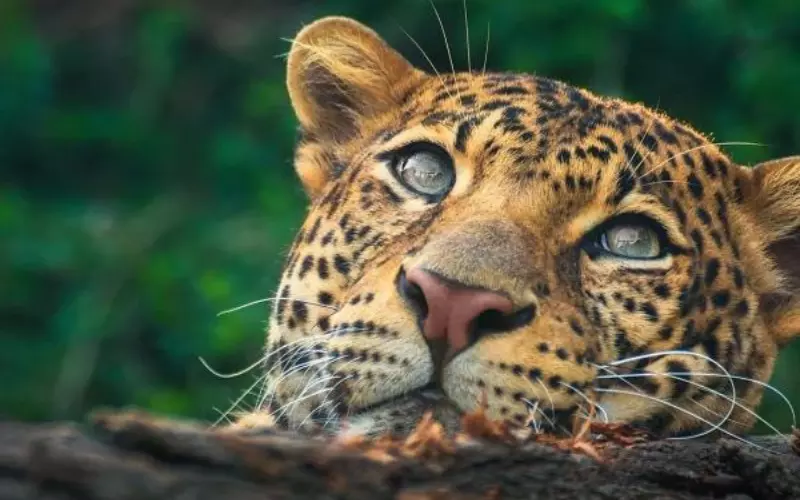
The Javan leopard is found in the Java region of Indonesia. Java is a Southeast Asian island home to various plants and animals. The Javan leopard, also known as Panthera pardus melas, is specifically native to Java and can be found in various habitats, including rainforests, plantations, and even near human settlements.
However, the Javan leopard is not found in any other region outside of Java. It is endemic to this specific island and is not found anywhere else. This makes the Javan leopard a unique and vital species that needs to be protected and conserved.
Unfortunately, the Javan leopard is currently facing several threats to its survival. Habitat loss due to deforestation, illegal poaching, and conflicts with humans are some of the main reasons for their declining population. Efforts are being made to protect and conserve the Javan leopard through various conservation programs and initiatives.
The Javan leopard is found in the Java region, part of Indonesia. It is not found in any other region or country. Efforts are underway to protect this beautiful and rare species from the threats it faces to ensure its survival for future generations.
Scientific Name of Javan Leopard
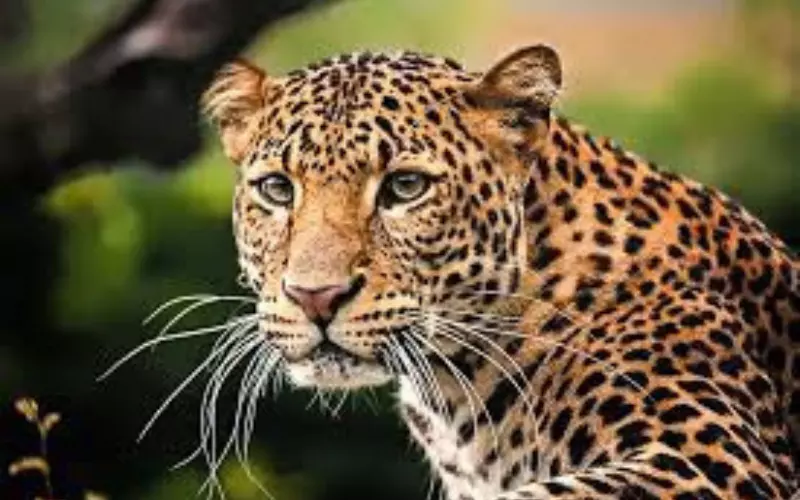
The scientific name of the Javan leopard, also known as Panthera pardus melas, is a combination of its genus name, Panthera, which refers to the big cat family, and its specific epithet, pardus melas, which indicates its subspecies. The Javan leopard is native to the island of Java in Indonesia and is one of the rarest subspecies of leopard in the world.
These leopards are medium-sized cats with beautiful yellow or grey fur coats decorated with rosette-shaped black spots. They have a muscular build and can weigh between 60 to 90 kilograms. The Javan leopard is an elusive creature that primarily hunts at night, preying on various animals such as deer, monkeys, and birds.
Unfortunately, the Javan leopard is critically endangered due to habitat loss, illegal hunting, and human-wildlife conflict. Destruction of its natural habitat, which includes forests and grasslands, has greatly reduced their numbers. Conservation efforts are being made to protect these majestic animals and increase their population, including setting up protected areas and supporting initiatives to raise awareness about their importance and the need for their conservation.
The Javan leopard, scientifically known as Panthera pardus melas, is a stunning and rare subspecies of leopard found on the island of Java in Indonesia. However, due to various threats, this beautiful big cat is critically endangered, and urgent conservation efforts are necessary to ensure its survival in the wild.
Diet of Javan Leopard

The diet of the Javan leopard consists mainly of meat. These leopards are carnivores, which means they eat other animals. Their preferred food sources include deer, wild pigs, monkeys, birds, and reptiles. They are skilled hunters and use their sharp claws and powerful jaws to catch and kill their prey.
Javan leopards are opportunistic hunters who take advantage of any available food sources in their habitat. If their usual prey is scarce, they will eat smaller animals like rodents and insects. However, larger ungulates like deer are their preferred meals because they provide more sustenance and energy.
These leopards are solitary animals, and they have to compete with other predators for food. They hide in the forest and silently stalk their prey before launching a surprise attack. They use their sharp teeth to deliver a quick and fatal bite to the neck or throat, ensuring a successful kill. Afterwards, they drag their prey up into the trees to prevent other animals from stealing it.
The Javan leopard is a meat-eating animal that hunts various prey. Its diet consists mainly of deer, wild pigs, monkeys, birds, and reptiles. However, it will also eat smaller animals if necessary. These leopards are skilled hunters with sharp claws and powerful jaws, enabling them to catch and kill their prey.
Locomotion of Javan Leopard
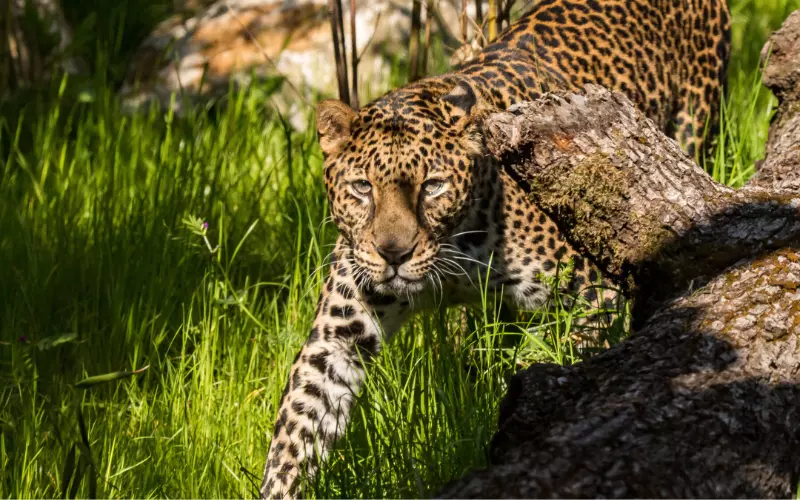
The Javan leopard moves in a unique way called locomotion. It is a term used to describe how animals move from one place to another. The Javan leopard has a very unique way of moving. It can walk, run, climb and even swim!
The Javan leopard uses its four legs to move forward when it walks. It puts one leg in front of the other, taking small steps. This helps it to creep and sneak up on its prey. When it wants to move faster, it starts running. Its back legs push off the ground and propel it forward. The Javan leopard can run up to 37 miles per hour!
Sometimes, the Javan leopard needs to reach high places. It uses its strong muscles to climb trees. It can grip onto the branches with its paws and pull itself up. This helps it to stay safe and hidden from other animals. The Javan leopard can swim if it needs to cross a river or a lake. It uses its long and powerful legs to paddle through the water. This ability allows it to hunt and travel in different types of environments. The Javan leopard is genuinely a fantastic animal with its unique moving method.
Social and Sexual Behaviour of Javan Leopard
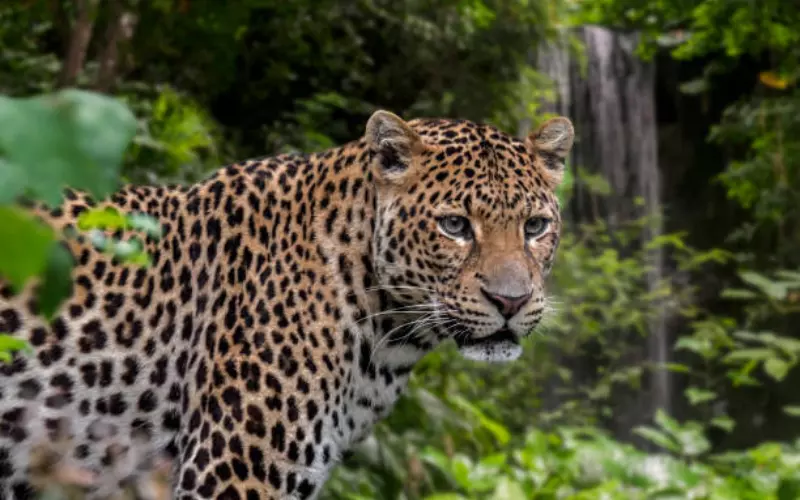
The Javan leopard is a fascinating animal living in Java Island’s forests in Indonesia. They are not only solitary creatures but also highly elusive, so they don’t usually enjoy being around other leopards or animals. They prefer to live alone and mark their territory to keep others away.
When it comes to finding a mate, Javan leopards are usually solitary, but during the breeding season, males and females come together for a short period. This is the only time that they interact with each other. The male leopard will often find the female by following her scent, and then they will spend a few days together before going their separate ways again.
Another exciting aspect of their behaviour is how they communicate. Javan leopards use a variety of signals to send messages to each other. They can growl, roar, or even use body language such as raising their tail or crouching to show aggression or submission.
The Javan leopard is a solitary and elusive animal that prefers to live alone and mark its territory. During the breeding season, male and female leopards come together for a short time. They communicate through various signals like growling and body language.
Reproduction and Lifecycle of Javan Leopard

The Javan leopard is a beautiful and fascinating animal that lives in the tropical rainforests of Java, an island in Indonesia. Like other animals, the Javan leopard goes through a reproduction process to create new life. A male leopard and a female leopard need to come together to make babies called cubs.
The life cycle of a Javan leopard starts when the female is ready to have babies, usually around 2 to 3 years old. She attracts a male leopard with her scent and calls during this time. Once they mate, the female leopard will carry the cubs in her womb for around three months. When the time comes, she will find a safe and hidden spot to give birth to her cubs. Usually, there are one to three cubs in a litter.
When the cubs are born, they are blind and dependent on their mother for food and protection. The mother leopard takes care of her cubs by feeding them with her milk and keeping them warm. As they grow, the cubs start to explore their surroundings and learn essential skills from their mother, like hunting for food. After about one to two years, the cubs become fully independent, leave their mother to find their territories, and start the cycle again.
The Javan leopard reproduces by a male and female leopard coming together to make babies. The life cycle begins with the female giving birth to blind and helpless cubs and the mother caring for them until they are old enough to explore and hunt for themselves. The Javan leopard is a truly fantastic animal whose life cycle ensures the survival of its species.
Threats to Javan Leopard
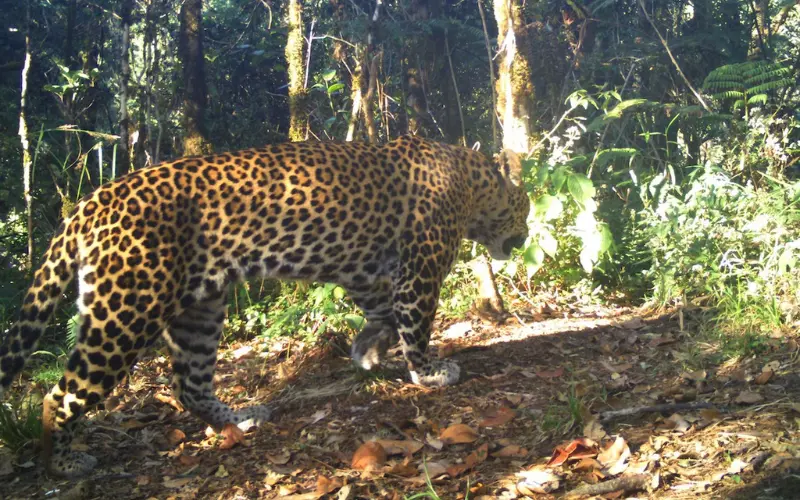
The Javan leopard is a beautiful and majestic animal that is sadly facing numerous threats to its survival. One of the biggest threats comes from habitat loss due to deforestation. Many forests in Java, Indonesia, where the Javan leopard lives, are being cleared for agriculture and human settlements. This means the leopard is losing its home and struggling to find enough food and shelter.
Another threat to the Javan leopard is poaching. Poaching is when people illegally hunt animals, often for their body parts or skins. The leopard’s beautiful and unique fur makes it a target for poachers, selling it on the black market for a high price. This illegal hunting puts immense pressure on the already small Javan leopard population and drastically reduces their numbers.
Furthermore, human-wildlife conflict is a significant threat to the Javan leopard. Conflicts may arise as humans continue to infringe upon the leopard’s habitat. Leopards sometimes prey on livestock, which can lead to retaliation from farmers who want to protect their animals. This can result in the killing of leopards, further endangering their populations.
To protect the Javan leopard, it is crucial to address these threats. Efforts must be made to conserve and restore its natural habitat, preserving the forest areas where the leopards live. Strict laws against poaching need to be implemented and enforced, with severe punishments for those involved in the illegal trade of leopard parts. Additionally, promoting coexistence between humans and leopards through community education and measures such as livestock protection programs can help reduce conflicts and prevent harm to humans and these magnificent creatures. By taking action to protect the Javan leopard, we can ensure its survival and maintain the balance of our precious ecosystems.
The population of Javan Leopard
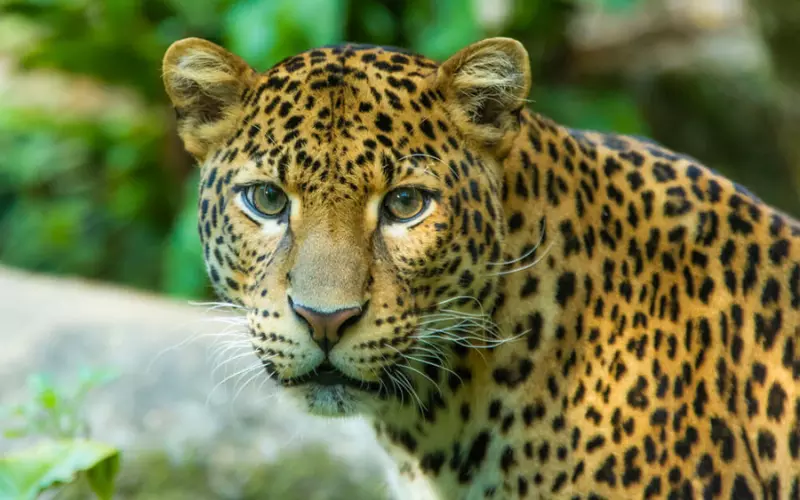
The Javan leopard animal population is estimated to be around 200 to 400 individuals. However, these numbers are not exact, and some sources suggest the population might be even smaller. Sadly, this beautiful creature is critically endangered, so it is at significant risk of extinction.
The main reason for the declining population of Javan leopards is habitat loss and fragmentation. Human activities like deforestation, agriculture, and logging destroy their natural habitats, leaving them less space to roam and hunt for food. Another threat to their population is illegal hunting. Some people kill these leopards for their fur, bones, and other body parts, which are used in traditional medicine and the illegal wildlife trade.
If actions are not taken to protect these magnificent creatures, the Javan leopard could face extinction shortly. Extinction means that no more Javan leopards will be left in the world. This would not only be a significant loss in biodiversity but also disrupt the balance of nature. We must raise awareness about the Javan leopard’s endangered status and work towards conserving their habitats before it is too late.
Conclusion
The Javan leopard, also known as Panthera pardus melas, is a fascinating animal found on the Indonesian island of Java. Despite its small population, the Javan leopard has played a significant role in the country’s history and culture. Classified as a critically endangered species, we need to understand the size, habitat, and facts about this remarkable member of the animal kingdom.
The Javan leopard is known to have a body length ranging from 1.2 to 1.5 meters and a weight of approximately 60 kilograms. Its stunning fur coat is adorned with rosette-shaped spots, distinguishing it from other leopard subspecies. Sadly, the Javan leopard faces a grim future due to habitat destruction and poaching.
These majestic creatures once populated vast regions of Java, but now their habitat is limited to protected areas, such as national parks. Experts estimate that less than 250 Javan leopards are left in the wild. Efforts are being made to protect their natural habitat and raise awareness about their critical situation. Everyone must understand the importance of conserving these animals and their ecosystem, as they contribute significantly to our planet’s biodiversity.
The Javan leopard faces immense challenges and is on the brink of extinction. Our responsibility is to conserve their habitat and protect them from threats such as poaching and habitat loss. By understanding their history, facts, size, habitat, and classification, we can appreciate the beauty and significance of these amazing creatures. Let us all work together to ensure that this magnificent animal and many other endangered species continue to thrive in their natural habitats for generations to come.
Frequently Asked Questions about Javan Leopard (FAQ’s)
What is a Javan Leopard?
The Javan Leopard (Panthera pardus melas) is a subspecies of Leopard found only on the island of Java in Indonesia.
How big do Javan Leopards typically grow?
Javan Leopards can grow up to 6 feet long and weigh around 80-190 pounds.
What does a Javan Leopard look like?
Javan Leopards have yellowish to reddish coats with black rosettes. They are smaller than other Leopard subspecies.
Where can Javan Leopards be found?
Javan Leopards are primarily found in the forests and mountains of the island of Java in Indonesia.
Why are Javan Leopards endangered?
Javan Leopards are critically endangered due to habitat loss, poaching, and illegal wildlife trade.
How many Javan Leopards are left in the wild?
Less than 100 Javan Leopards are estimated to remain in the wild, making them one of the rarest big cats in the world.
What is the main threat to Javan Leopards?
Habitat loss caused by deforestation and land conversion for agriculture is the main threat to Javan Leopards.
What do Javan Leopards eat?
Javan Leopards are carnivores whose diet consists of various prey, including deer, wild boar, monkeys, and birds.
How do Javan Leopards hunt?
Javan Leopards are stealthy hunters and use their robust build and sharp claws to ambush and bring down their prey.
Are Javan Leopards solitary animals?
Yes, Javan Leopards are solitary animals that only come together for mating purposes.
What is the lifespan of a Javan Leopard?
The average lifespan of a Javan Leopard in the wild is around 12-15 years.
Do Javan Leopards have any natural predators?
No, Javan Leopards have no natural predators other than humans.
Can Javan Leopards swim?
Yes, Javan Leopards are capable swimmers and can cross rivers and streams when necessary.
Are there any conservation efforts for Javan Leopards?
Several organizations and initiatives are working towards conserving the Javan Leopard, including habitat protection and anti-poaching programs.
Can Javan Leopards be kept as pets?
No, keeping Javan Leopards as pets is illegal due to their status as a critically endangered species.
How can people help protect Javan Leopards?
People can help protect Javan Leopards by supporting conservation organizations, raising awareness, and advocating for stronger protection laws.

Hi there! I’m Morgan Gutierrez, and I love animals! I work as a Seasonal Animal Care Specialist at Brookfield Zoo and also teach people about animals, which is super fun. I studied at Valparaiso University in Lockport, Illinois, where I learned even more about these amazing creatures.
I’m not just about taking care of animals; I write articles about them, too! I explore and share many interesting animal stories, from cute kittens to giant elephants.
In the past, I’ve worked with veterinarians, helped with research, and even been an Animal Ambassador, bringing animals closer to people. Animals are my passion, and I enjoy helping others learn about them. So, if you ever want to know about animals, feel free to ask. I’ll explain it in a way that’s easy to understand, just like talking to a friend!












